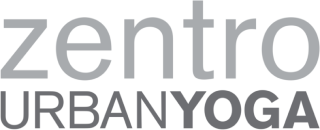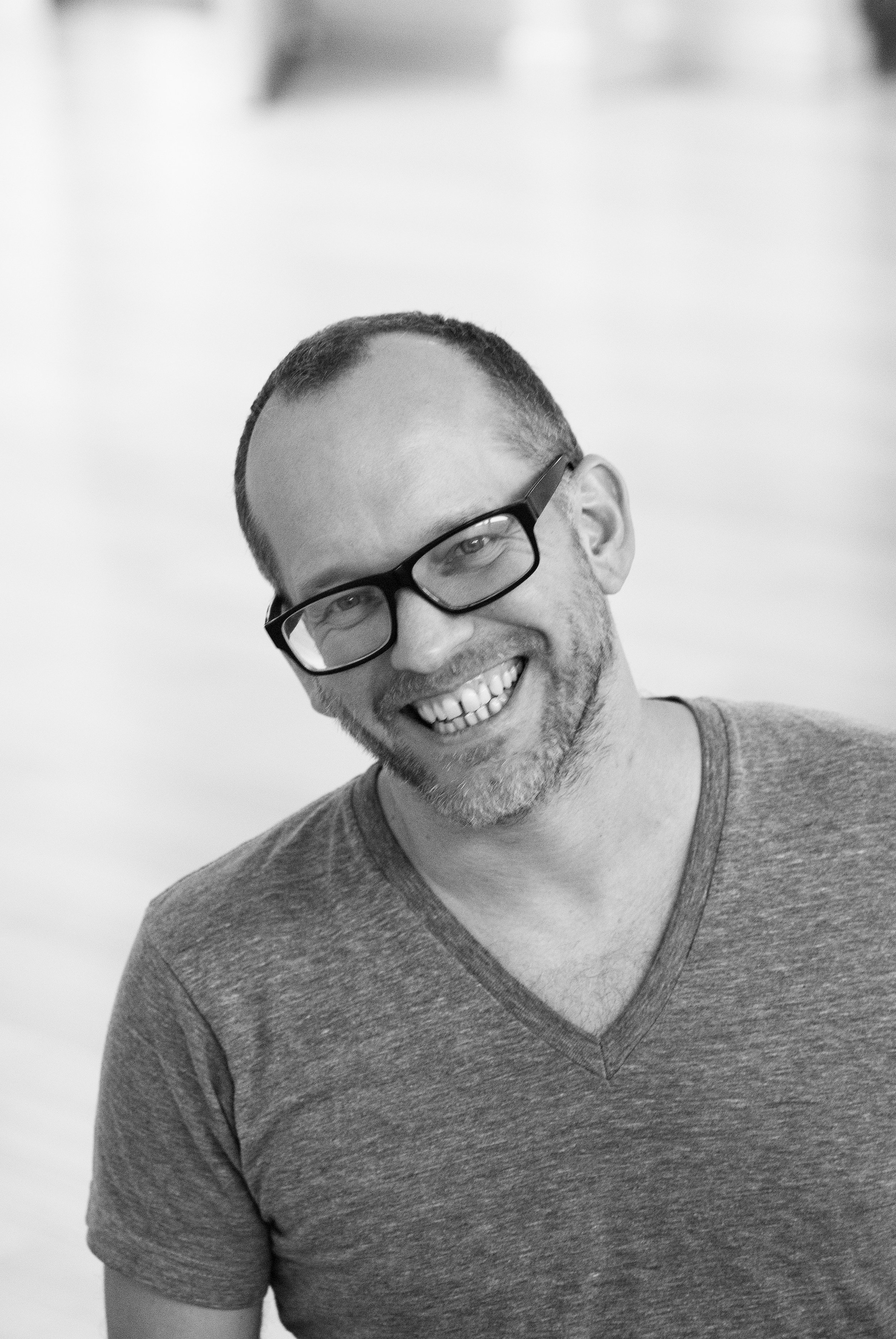JOE BARNETT: ALL ABOUT THAT YIN YOGA LIFE by Ashley Leal
I remember my first class with Joe Barnett about ten years ago. It was also my first class at Tucson Yoga. The Sunday morning Yin & Flow class was packed. His sequences were refreshing, including the golden seed, along with long-held yin poses and lines from Tao de Ching, creatively peppered in. There are a handful of teachers who have impacted my own teaching and practice as much.
For nearly two decades, Joe has been a devoted student of Paul Grilley, the founder of Yin Yoga. He now travels nationally and internationally year-round offering presentations and training on Yin and Yang (Vinyasa) forms of yoga.
How and when were you first introduced to yoga?
In the spring of 1995 I became familiar with the concept of yoga.
I understood the practice as a way to embody a subtle energetic happening in the form of a pose. At the time, I was in the middle of my Master’s study of Theatre. I was writing and directing a vigorous form of physical theatre. After my studies ended, I continued this work in warehouses and other found spaces in Cincinnati, Ohio.
Yoga, which had continued to stew in the back of my mind, at that moment seemed the perfect training for the stage work suggested by my theatre heroes from the 60’s: Peter Brook, Augusto Boal and Jerzy Grotowski.
I began practicing a strong, hot and sweaty Vinyasa Yoga class at a local studio. I started stealing and integrating some of the words of the yoga teachers. It quickly began working on the bodies and movements of the actors, and on my ability to communicate the techniques and purpose of the drama. That show, a piece called Script Amoeba, was my favorite work I ever produced. It was also the last.
I fell in love with a new art — yoga. My lungs craved the breath work; my joints craved the fluidity. I did not fall out of love with theatre but my time was now consumed with my new drive to understand and feel the effects of yoga.
I jumped into the next yoga teacher training I could. Yes, I am one of those yogis who rushed to be a teacher after his first introduction.
Why did you decide to start teaching?
I did not plan to teach yoga when I took my first yoga teacher training.
As I said, I was drawn into yoga through my studies of physical theatre. I took a Vinyasa Yoga training with the intention of integrating the yoga postures and flow with the creation of theatre through body shapes and dramatic movement.
But soon into the teacher training process I felt a spark of the joy I received in theatre.
“It was not Yin Yoga that had me at that point ... it was the functional approach and the realization that every body is unique and every body requires a unique alignment. ”
I love working with actors, dancers, musicians and others who use their bodies as artistic instruments. I love watching them rehearse and I was filled with life and light when I’d had the honor to write, direct and create with physical artists of all sorts. The process is even more enjoyable than the finished product. When teaching yoga I felt this process, this collaboration, and I still do.
What changes have you noticed in your life from practicing/teaching yoga?
Soon into practicing Vinyasa Yoga I found myself much calmer and stronger. I was also more connected with my dream world (both waking and sleeping). Integrating Yin Yoga into my larger practice gave me a steadier mind within the calm. I experience more fluidity and comfort within my strength, along with the ability to navigate more effectively through the intersections of mind, body and spirit.
How were you first introduced to Yin Yoga and your mentor, Paul Grilley?
During Paul’s first years of traveling and spreading the word of Yin Yoga, when the model was in its infancy, he came through my town. Many of my dearest friends and fellow yoga teachers went; I did not. I had not heard enough to interest me but when my friends returned they were wild-eyed and speechless at first. That brief silence was followed by a rush of excitement and animated dialogue about the flood of inspiration from the training. They had seen, felt and realized a new way of viewing the human body, and they told me about every second of the workshop.
It only took a couple of details about Paul’s functional, individual and yin approach before I realized I had missed a course with the potential to shift my understanding of the body and my entire way of practicing on a fundamental level. I had already been feeling that something was missing or flawed in my previous training, and in that moment I knew where the answer was. I spent my next paycheck on a flight to the next Grilley workshop in San Francisco. And indeed I was blown away. My entire approach to practice and teaching was altered at its core.
It was not Yin Yoga that had me at that point. I definitely enjoyed the practice — deep stretching of the hips and spine, the quiet and surrender in the effort to go deep and more. However, it was the functional approach and the realization that every body is unique and every body requires a unique alignment. That is what got me on the plane and made me realize I had found my teacher.
Why have you dedicated much of your career to teaching Yin Yoga?
Three reasons:
First, the need for a more balanced approach toward yoga asana (postures).
The name Yin Yoga indicates it is a complementary form. It is incomplete in itself.
Yang forms of mind/body exercises are as necessary for optimal health as are yin forms. The style name, Yin Yoga, was a call for the Vinyasa (yang) Yogis to make sure their dynamic muscular efforts were not leading them to an energetic imbalance. Yin Yoga’s effort to relax deep into the joints of the body can also be imbalanced with out a proper amount of yang effort to strengthen the musculature around the joints. The name Yin Yoga invites the question of balance.
Second, the functional approach.
The study of Yin Yoga postures begins with a study of human variation, especially skeletal variation. Each individual has a unique set of bones with their own idiosyncratic proportions, twists and curvatures. These structures along with the variable tensions of the fibers determine each person’s healthy range of motion.
I am thankful that the idea of a one-size-fits-all, universal alignment ended early in my yoga teaching life when I met my teacher. Teaching yoga would be so boring if all I had to do was read a script. Each yogi is unique. My job as a yoga teacher is to guide a group class (in which I do have mental scripts), but it is also more excitingly about working with new individuals and helping them to discover their unique shape. Often I am helping someone discover their body and its needs. Each body is a puzzle that I have the honor to help solve.
I love puzzles.
Finally, the Grilleys.
Long before Yin Yoga became widely known, I had the fortune of meeting and studying with Paul Grilley, the founder of Yin Yoga, and his wife Suzee. She is now his co-teacher and equal in the presentations. I was present for the discussions about the launching of the Grilley’s teacher training. I was invited to be his first teaching assistant. Actually, I invited myself to be his assistant, and then he graciously invited me back again and again to this day.
I have seen all of the many evolutions of the model. I have even had some small influences. Seeing and being a small part in this process has been and continues to be intellectually and emotionally satisfying and life affirming.
The Grilleys are brilliant, compassionate, humble, funny and forever searching for deeper layers of truth in their yoga practice and in their connections with students and colleagues.
Working for them, with them and spreading this profound and healing modality is my life.
What is your favorite Yin Yoga pose and why?
Cat Tail Pose is a reclining, back-bending twist where the yogi reaches behind their body to catch the opposite foot (catching the tail).
This model of Yin Yoga does not have alignment rules. We have target areas and the poses are the tools for the job. Most poses have a small number of potential target areas, sometimes even just one.
For many yogis, Cat Tail Pose has many options of therapeutic target areas. Investigating this pose includes a bit of rolling around on the floor and playing with bolsters and blankets before settling into a long quiet stillness.
I love rolling around on the floor.
Can you offer some tips for people looking to try this practice?
Search within your teacher’s words for the functional objective of the posture, the target area. What are you meant to feel? What sensations should you avoid? If you don’t know, ask your teacher.
Focus on the function of the pose not the aesthetic. The goal is not the shape of the pose. The shape of the pose is variable and ultimately unique to you.
All you can do is feel into it and trust yourself. When that is achieved, Yin Yoga is magic.
- Ashley Leal -
“The goal is not the shape of the pose. The shape of the pose is variable and ultimately unique to you. ”
Joe Barnett
Joe Barnett (ERYT-500) based in Tucson, AZ, has been teaching for 19 years. He travels nationally and internationally year round offering presentations and trainings on Yin and Yang (Vinyasa) forms of Yoga. He provides a deep study (both experiential and theoretical) of the skeleton and fascia of the body, as well as the Meridians and Chakras of the “subtle body.”
For nearly two decades, Joe has been a devoted student of Paul Grilley, the founder of Yin Yoga. For one decade, Joe has been one of only a few senior teaching assistants of Paul Grilley (paulgrilley.com), a true Yoga Scientist and founder of Yin Yoga. In 2011, after several years of this work Paul began sending Joe across the globe to spread the word of his teacher’s work: Yin Yoga, Functional Anatomy and Chakra Meditation.
Joe offers teacher trainings, workshops, and an intensive lecture series with a slide shows, chalk board schematics and most importantly interactive, hands-on analyses.
Joe’s other on-going teachers include Gil Hedley and other cadaver dissection masters who reveal the physical continuity (fascia) of the subtle energy patterns (meridians) felt in a Yoga practice…and Takeshima-Sensei from the Institute for Human Sciences established in Tokyo and California by his and Grilley’s teacher, Dr. Hiroshi Motoyama.
Joe’s play time, on the other hand, has been AcroYoga since 2006 when he met Jason Magness (yogaslackers.com). In 2010, Joe traveled to Montreal to receive both levels of certification through the original AcroYogis Eugene Poku and Jessie Goldberg (acroyoga.com).


